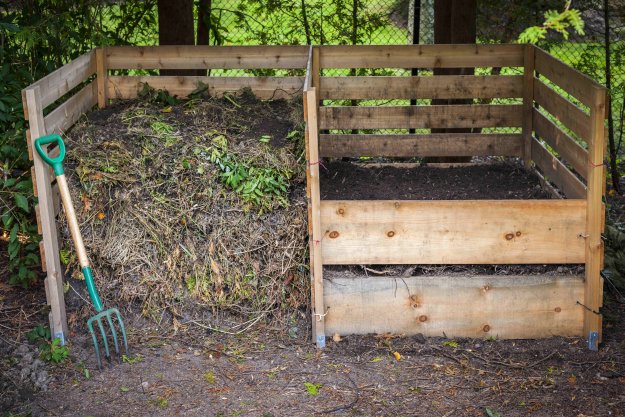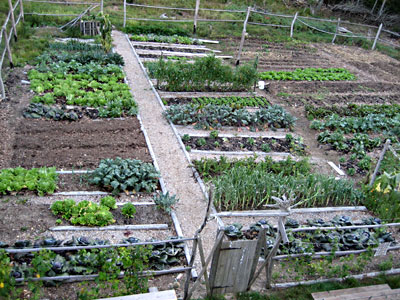Step-by-Step Guide to Homestead Gardening Effort
Step-by-Step Guide to Homestead Gardening Effort
Blog Article
Uncover the Tricks to Developing a Gorgeous and Efficient Horticulture Room
Producing a effective and beautiful gardening room is not just an issue of planting vegetables and flowers; it needs a critical strategy that incorporates various essential aspects. From picking the right place based on sunlight and dirt kind to thoughtfully making your layout and selecting appropriate plants, each choice plays a critical role in the success of your yard.
Selecting the Right Area
Selecting the perfect location for your garden is vital to its success and overall aesthetic appeal. The initial step in this procedure entails assessing sunlight direct exposure, as the majority of plants require at the very least six hours of straight sunshine daily (Homestead Gardening). A south-facing garden normally obtains the most light, while shaded locations can hinder growth and flowering
Furthermore, think about dirt high quality and drainage. Well-draining soil is important to stop waterlogged origins, which can lead to plant illness. Carrying out a soil examination can provide useful info concerning pH degrees and nutrient web content, enabling you to modify the soil as necessary.
In addition, closeness to water sources is an additional element to evaluate - Homestead Gardening. Having simple accessibility to a pipe or watering system can simplify the watering process and motivate consistent plant treatment. Wind security is additionally vital; positioning your yard near frameworks, such as fencings or wall surfaces, can shield it from severe winds that might harm fragile plants
Lastly, consider access for maintenance and harvesting. A well-placed yard enables for practical accessibility, guaranteeing that you can easily tend to your plants without triggering excessive stress and anxiety or disruption. Thoughtful place selection lays the foundation for a flourishing garden.
Selecting Plants Intelligently
When picking plants for your garden, it's important to think about elements such as climate, dirt conditions, and personal choices to ensure a efficient and harmonious space. A thorough understanding of your regional environment will assist you in selecting plants that prosper in your certain environment. For example, selecting drought-resistant varieties is advantageous in deserts, while moisture-loving species might be better suited for locations with high rainfall.
Soil problems are just as important; carrying out a soil test can reveal pH degrees and vitamins and mineral web content, allowing you to pick plants that will grow. Native plants are commonly an exceptional choice, as they are usually well-adapted to neighborhood soil types and call for less upkeep.
In addition, consider your gardening goals. Are you going for a decorative display screen, a veggie yard, or perhaps a combination of both? This will influence your selections substantially. Show on your personal choices-- choosing plants that resonate with your visual preferences will certainly boost your satisfaction and dedication to preserving your garden. By very carefully assessing these aspects, you can produce a flourishing and diverse plant selection that elevates your horticulture experience.
Creating Your Yard Format
With an attentively picked plant selection in hand, the following action is to develop a yard format that makes best use of both appeal and capability. Begin by examining the available area, thinking about aspects such as color, wind, and sunlight patterns. A well-planned format ought to incorporate numerous areas, consisting of areas for growing, pathways, and potentially seating.
Begin with bigger plants or centerpieces, such as trees or tall perennials, placed tactically to develop aesthetic rate of interest. Layer smaller plants ahead to boost depth and structure. Consider our website the development routines of your selected plants; taller varieties should be positioned at the back or center of beds, while much shorter ones can line the edges.
Including pathways not just facilitates accessibility for maintenance but also welcomes exploration. Usage materials that match the garden's overall visual, whether crushed rock, timber, or rock chips.
Additionally, believe regarding seasonal modifications and just how your design will certainly look throughout the year. Integrating evergreens alongside seasonal blossoms can make certain year-round charm. Eventually, a well-designed garden layout harmonizes the natural charm of plants with practical factors to consider, causing a room that is both inviting and efficient.
Enhancing Dirt Wellness

To boost soil health and wellness, start by conducting a soil examination to assess pH levels, vitamins and mineral web content, and soil structure. Include organic matter such as compost, well-rotted manure, or fallen leave mold to improve soil framework, water retention, and microbial task.
Mulching is an additional reliable approach; it not only preserves dampness however additionally reduces weeds and gradually enriches the dirt as it damages down. Staying clear of excessive husbandry is important, as it can interrupt dirt structure and damage helpful organisms. Instead, adopt no-till or minimal tillage methods to preserve dirt stability.

Preserving Your Garden Effectively
A well-maintained yard gives pride and performance, needing constant interest to ensure that plants flourish and the landscape remains welcoming. Efficient yard upkeep includes several key techniques that boost the health and wellness of your plants and the general visual of your space.
Regular watering is important; nonetheless, it is necessary to tailor your watering routine based upon the details demands of your plants and local environment problems. Mulching can aid maintain dampness, subdue weeds, and manage soil temperature. Timely weeding avoids see this competitors for nutrients and resources, making sure that your plants flourish.
Trimming is an additional necessary job. It motivates healthy development, removes unhealthy or dead branches, and shapes plants to preserve an appealing framework. In addition, monitoring for bugs and diseases is vital; early discovery and treatment can save your plants from significant damage.
Fertilization needs to be implemented thoughtfully, making use of organic choices whenever feasible to advertise long-term dirt health and wellness. Seasonal jobs such as growing, separating perennials, and preparing for wintertime will certainly ensure your yard stays vivid year-round. By adhering to these methods vigilantly, you can grow a yard that is both stunning and productive.
Verdict
Choosing an appropriate area with sufficient sunshine, picking appropriate plants, making an aesthetically pleasing design, improving dirt health and wellness, and guaranteeing routine upkeep are necessary components. By incorporating these methods, one can grow a thriving yard navigate here that not only enhances the landscape but additionally advertises eco-friendly equilibrium and sustainability.
From selecting the right place based on sunlight and soil type to thoughtfully designing your design and choosing ideal plants, each decision plays a pivotal role in the success of your yard. Well-draining soil is important to stop waterlogged origins, which can lead to plant illness.When choosing plants for your yard, it's crucial to consider variables such as environment, soil conditions, and personal choices to ensure a harmonious and efficient room. Ultimately, a properly designed garden layout balances the all-natural charm of plants with practical considerations, resulting in an area that is both inviting and efficient.

Report this page